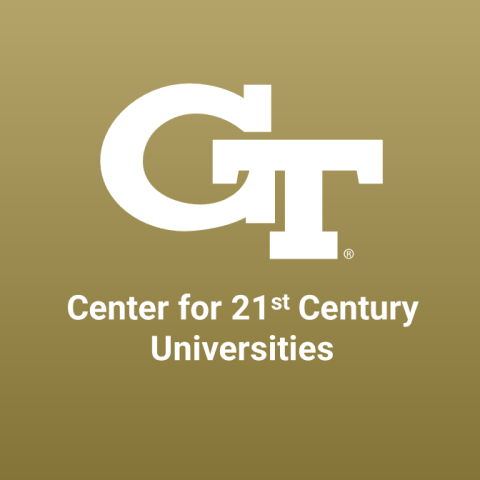
How to make dual-enrolment programmes work
When Georgia Tech started its distance calculus programme nearly two decades ago, the face of the programme was a venerable mathematics professor standing in the front of a small auditorium in full cycling gear. He lectured wide-eyed first-year university students in the room and beamed his recitations live to five maths classrooms in metro Atlanta high schools. Everything about the programme was unorthodox, starting with the availability of post-calculus maths for high school students in Georgia.
Fast-forward to today, and the class reaches more than 90 high schools in Georgia and models the possibility of dual enrolment, allowing us to use innovative delivery and solid partnerships to serve the state and to create pipelines. Here are strategies we have learned along the journey.
Take advantage of innovative delivery
Some campuses include dual-enrolment students in classes that would otherwise have empty seats. But what do you do if your campus can’t offer this option because you’re always operating at near capacity? You can create programmes that invite high-school students to enjoy your courses in designs intended for them.
- What distinguishes a university from a knowledge enterprise?
- How can universities get more school pupils enthusiastic about science?
- How to embed service to society within the educational experience
When I picture our early days in distance dual enrolment, I understand that broadcasting a college calculus class in Atlanta to suburban high schools was innovative. Today, reaching students who started their high school experience in an entirely virtual setting, innovation is still evident in the delivery of courses – and the human element is also present. Math classes include a hybrid set-up of recorded lectures and live studio sessions. Teaching staff who never see these students in person hold office hours and study sessions for them. They keep staff chats and discussions to make sure that students understand the material. Students can work at their own pace when they need to and have present support when they need that, too.
Serve your community
Dual enrolment allows colleges and universities to provide educational programmes that local school systems cannot support. As an institute of technology, we have both the opportunity and the responsibility to provide STEM courses that our schools in Georgia struggle to fund and operate. So, 18 years into teaching advanced maths through dual enrolment, we find the need greater than ever; more than 1,100 students applied for the programme for fall 2023. We’ve expanded our programme and renamed it Distance Math to acknowledge that we teach four mathematics courses, only one of which is calculus.
If you know the fields in which your campus excels and where your programmes meet the needs in your community, you can both fill a need and create a pipeline. Legislation of the Georgia General Assembly requires computer science for every high school student beginning in 2024. Using the model of our maths programme, we have expanded our distance dual enrolment offerings to include introductory computer science classes. When computer science teachers are in short supply, providing another option for this critical subject reflects our commitment to serving the state.
Create a pipeline
Successful dual enrolment programmes can create pipelines for individual institutions, systems and even for majors and programmes. And aligning offerings to the community’s needs and the institution’s curriculum can improve overall retention and graduation rates.
Nearly 20 per cent of our first-year students from Georgia participated in our dual enrolment programmes. Other institutions in our university system automatically admit dual enrolment students as first-year students, allowing natural retention on their campuses. Without natural retention, we retain 60 per cent of our dual enrolment students on our campus and 75 per cent in the university system. The University System of Georgia compared the performance of first-year students who had participated in dual enrolment with those who had not and found that the dual enrolment students consistently outperformed their classmates.
When dual enrolment participants enter our institution as first-year students, they bypass heavily subscribed first-year maths and computer science courses. Every bit of flexibility in scheduling relieves stress on our urban campus with limited space.
Forge strategic partnerships
The success of any dual enrolment programme depends on key partnerships across your campus and with high schools and districts. For us, collaborators designing and implementing new programmes include the Center for Education Integrating Science, Mathematics and Computing (our official arm to the K-12 community), Professional Education (our experts in online delivery) and academic units. Enrolling students requires partnerships among the offices of undergraduate admission, financial aid, registrar and bursar.
On the high school side, we work with counsellors who assist with scheduling and approving registration and funding. We work with facilitators who proctor tests in the maths courses. Building these relationships ensures that your dual enrolment programme can sustain enrolment and relevance over decades.
Laura Brown Simmons is director of non-degree programmes in undergraduate admission at Georgia Tech.
If you would like advice and insight from academics and university staff delivered direct to your inbox each week, sign up for the Campus newsletter.




